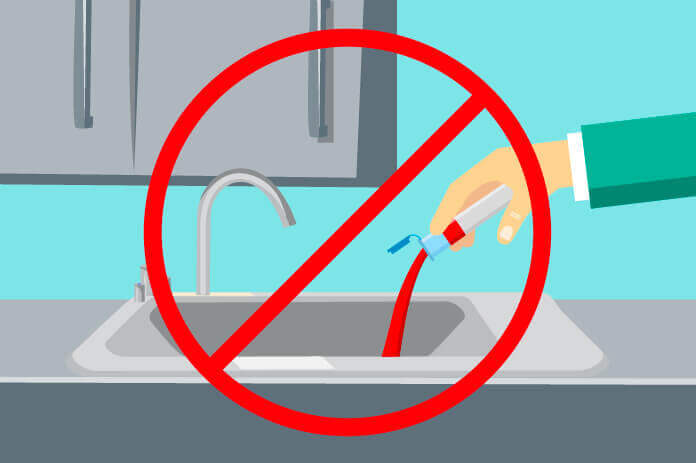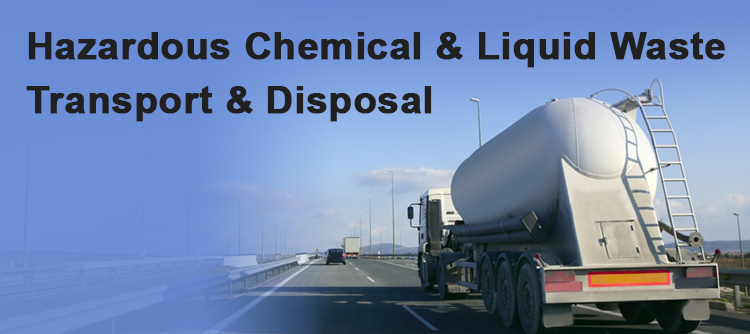Leading Liquid Waste Disposal Melbourne: Trusted Solutions for Proper Waste Management
Leading Liquid Waste Disposal Melbourne: Trusted Solutions for Proper Waste Management
Blog Article
Understanding the Comprehensive Refine of Fluid Waste Disposal: Finest Practices and Environmental Effect Considerations
The monitoring of liquid waste disposal is a complex issue that needs an extensive understanding of numerous finest methods and their associated ecological impacts. From the types of liquid waste produced to the methods utilized for collection, therapy, and final disposal, each action plays a vital duty in protecting ecological communities and public health and wellness.
Kinds of Liquid Waste
Comprehending the numerous sorts of fluid waste is essential for efficient monitoring and disposal practices. Liquid waste can be generally classified into a number of kinds, each requiring special handling and therapy methods.
Industrial liquid waste usually has dangerous products, consisting of heavy metals, solvents, and chemicals, created throughout producing procedures. These wastes demand strict regulatory compliance to shield human wellness and the environment. Residential fluid waste primarily refers to wastewater generated from homes, consisting of sewage and greywater, which, although much less poisonous, can still pose significant threats if improperly taken care of.
Agricultural liquid waste, consisting of overflow from farms, commonly has fertilizers and chemicals that can lead to ecological deterioration otherwise treated effectively. Clinical fluid waste, produced from medical care centers, includes polluted fluids such as physical liquids and chemicals, needing specialized disposal techniques to stop infection and environmental contamination.
Finally, oil and grease waste, generally produced by dining establishments and auto sectors, can trigger serious blockages in sewer systems if not taken care of properly. Recognizing these groups assists in targeted methods for treatment, compliance with laws, and efficient disposal techniques, ultimately advertising ecological sustainability and public health and wellness safety.

Collection Approaches
Efficient collection methods are crucial for the proper monitoring of fluid waste, guaranteeing that it is gathered securely and efficiently prior to treatment or disposal. Various strategies are employed depending on the kind of fluid waste produced, the volume, and the particular characteristics of the waste.
One typical technique is using specialized collection containers or sumps, which are designed to capture fluid waste at the resource. These systems usually integrate pumps that promote the transfer of waste to larger storage space containers or treatment centers. Furthermore, mobile collection systems equipped with vacuum technology are employed in scenarios where waste is generated periodically or in hard-to-reach areas.
For commercial setups, closed-loop systems can properly lessen spills and leaks, allowing for the healing and reuse of liquid waste. It is likewise necessary to train employees on appropriate collection protocols to minimize risks related to hazardous compounds.
Additionally, implementing routine upkeep routines for collection equipment makes certain optimal performance and security. The assimilation of innovative surveillance systems can boost collection effectiveness by giving real-time information on waste degrees and possible dangers. In general, reliable collection approaches are foundational to lasting liquid waste management techniques.
Therapy Processes
Therapy procedures play a crucial duty in the management of fluid waste, transforming possibly dangerous materials into reusable sources or risk-free effluents - liquid waste disposal. These processes can be generally categorized into physical, chemical, and organic techniques, each tailored to resolve specific contaminants present in the waste stream
Physical therapy techniques, such as sedimentation and purification, job by getting rid of suspended solids and particle issue. These strategies are commonly the initial step in the treatment chain, successfully decreasing the load on subsequent processes. Chemical treatments involve using reagents to neutralize dangerous compounds, speed up hefty steels, or oxidize natural toxins, therefore boosting the safety of the effluent.
Organic treatment processes, consisting of activated sludge systems and anaerobic digestion, take advantage of the natural abilities click site of microorganisms to break down raw material. These methods are specifically efficient for wastewater including naturally degradable toxins. Advanced treatment innovations, such as membrane layer purification and advanced oxidation procedures, are significantly employed to accomplish higher degrees of filtration.
Incorporating a mix of these therapy approaches not just makes certain conformity with regulatory criteria yet additionally advertises ecological sustainability by recovering useful sources from liquid waste.
Disposal Options
Just how can organizations make certain the risk-free and accountable disposal of fluid waste? Reliable disposal alternatives are important for safeguarding public wellness and the atmosphere. The primary approaches include land therapy, incineration, and disposal adhered to by discharge into local wastewater systems.
Land disposal includes the careful containment of fluid waste in designated landfills, making certain that it does not seep into bordering soil or water. Incineration, on the other hand, subjects fluid waste to high temperature levels, converting it into ash and gases, which require correct filtering to lessen discharges. This technique appropriates for contaminateds materials that can not be dealt with through typical ways.
In situations where fluid waste can be dealt with, organizations may choose for organic or chemical treatment processes to reduce the effects of dangerous elements prior to discharging the treated effluent right into local systems. This course usually aligns with governing requirements, making certain that the effluent satisfies safety and security criteria.
Inevitably, companies must conduct complete evaluations of each disposal alternative to establish its feasibility, considering elements such as waste structure, governing compliance, and potential dangers to wellness and the environment. By picking suitable disposal methods, services can add to a liable waste administration approach.
Environmental Influence
The environmental influence of liquid waste disposal is a critical consideration for companies seeking to minimize their eco-friendly footprint. Furthermore, the discharge of neglected or improperly treated waste into surface waters can result in eutrophication, leading to oxygen exhaustion and the succeeding death of fish and other microorganisms.

To minimize these effects, organizations have to adopt best methods such as executing rigorous waste treatment procedures, advertising recycling and reuse, and sticking to regulative requirements. By taking a proactive approach to fluid waste administration, entities can dramatically lower their ecological impact while sustaining sustainable growth objectives. Ultimately, a detailed understanding of the ecological influences connected with fluid garbage disposal is necessary for educated decision-making and accountable stewardship of natural sources.
Conclusion
Reliable management of liquid waste is important for safeguarding ecological integrity and public health and wellness. By embracing ideal techniques in disposal, therapy, and collection, alongside adherence to regulative criteria, the potential for dangerous contamination of communities can be significantly lowered. Constant advancements in technology and processes add to lasting waste administration initiatives. Inevitably, a detailed understanding of liquid waste disposal not only mitigates environmental effects but likewise promotes a commitment to responsible resource monitoring and ecological stewardship.
The monitoring of fluid waste disposal is a multifaceted problem that needs an extensive understanding of numerous ideal practices and their associated environmental effects. From the kinds of fluid waste created to the methods utilized for collection, therapy, and final disposal, each action plays an essential duty in safeguarding environments and public health.The ecological impact of liquid waste disposal is a vital consideration for companies looking for to decrease official website their ecological impact. Ultimately, an extensive understanding of the environmental effects associated with fluid waste disposal is vital for informed decision-making and accountable stewardship of all-natural sources.
Inevitably, a thorough understanding of fluid waste disposal not just minimizes ecological impacts but likewise cultivates a commitment to liable resource monitoring and ecological stewardship.
Report this page